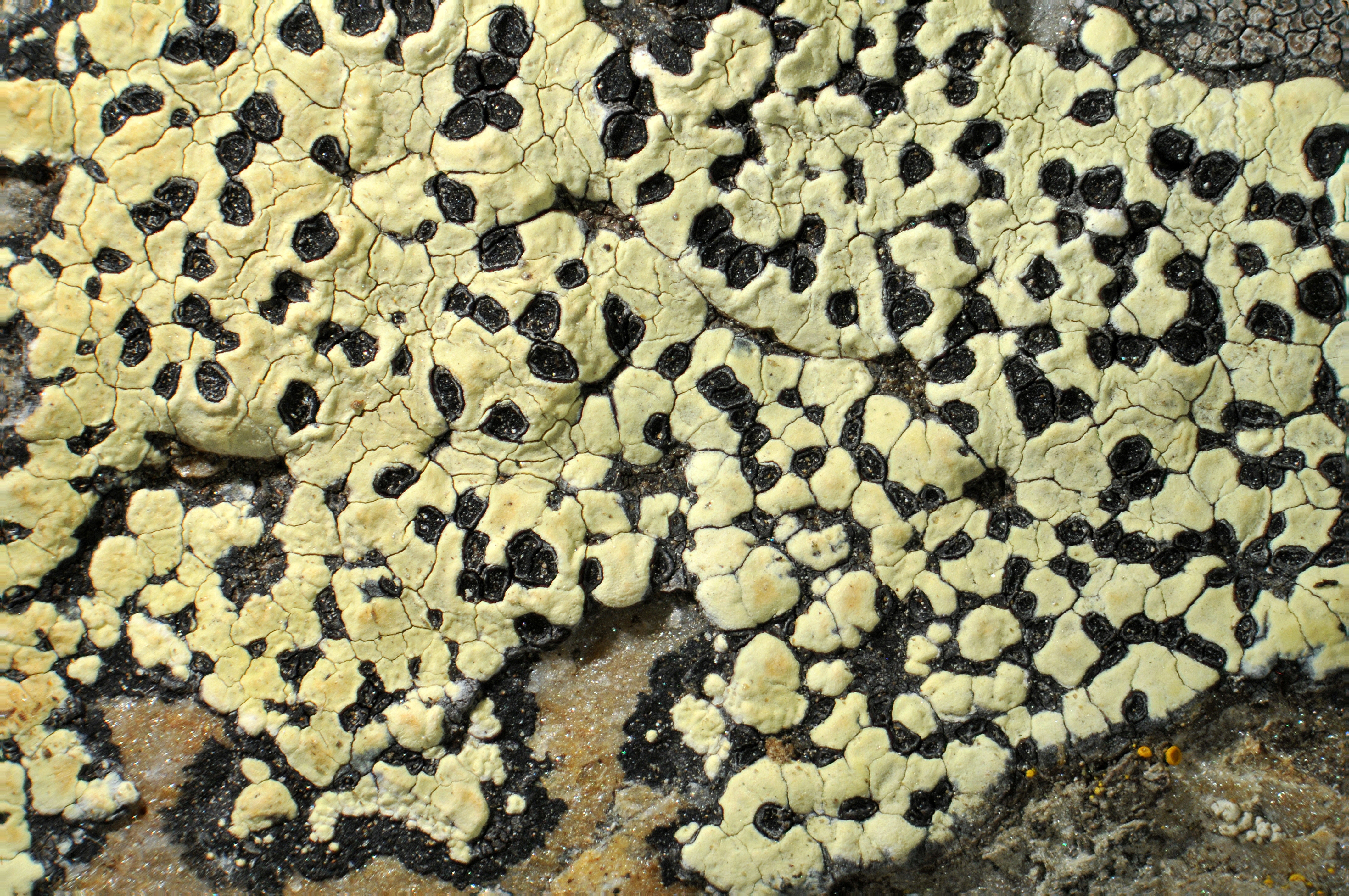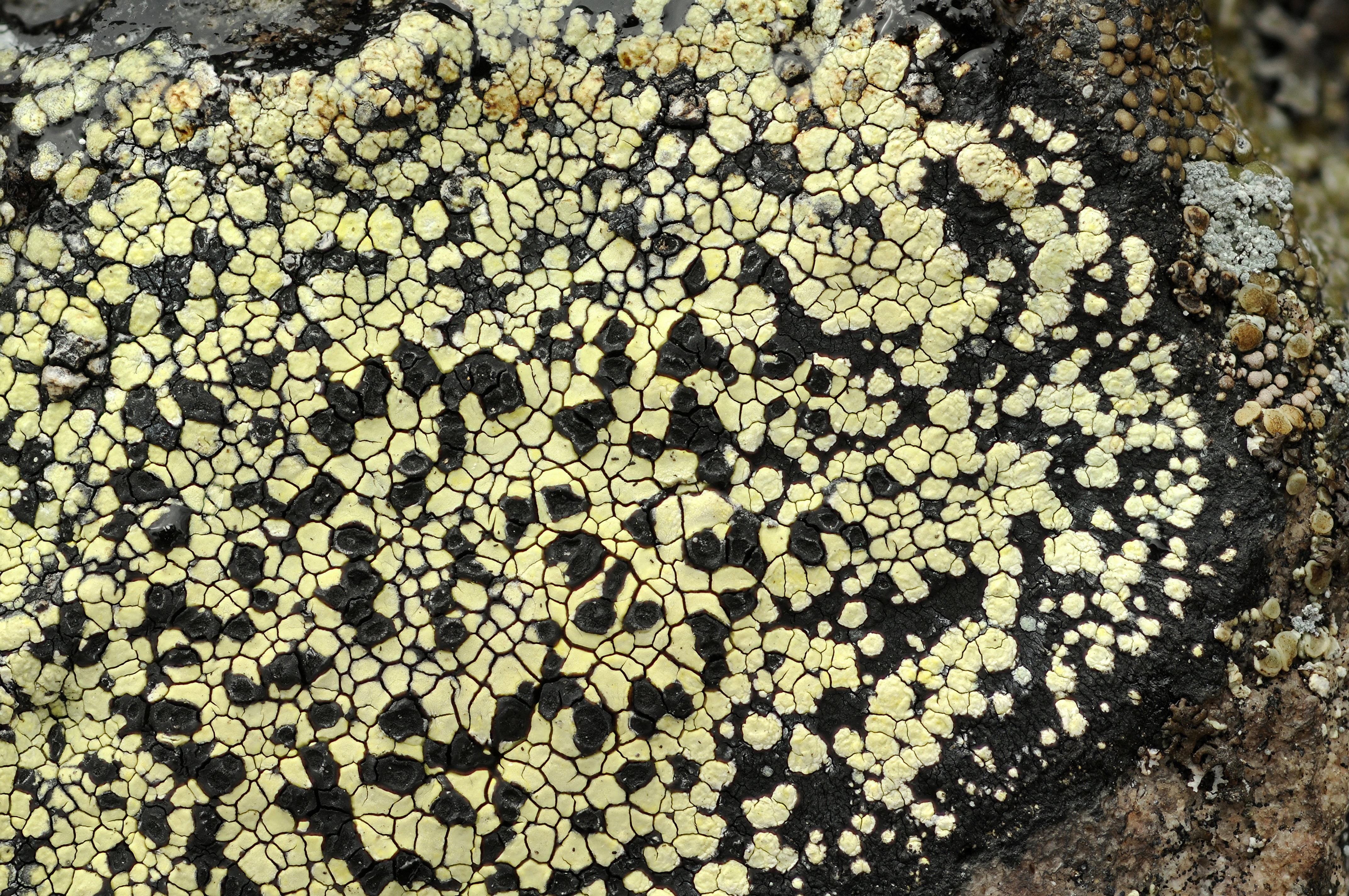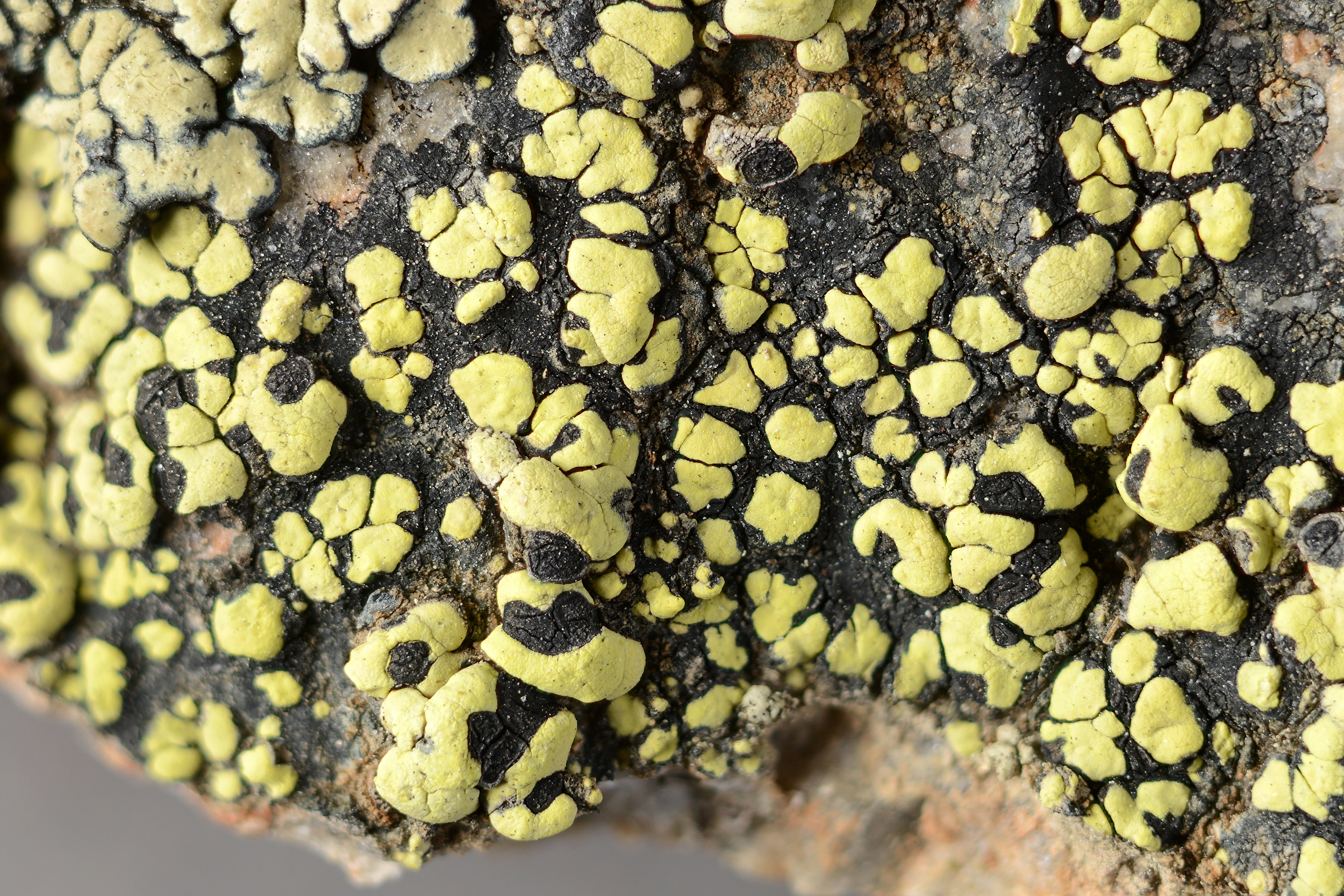Rhizocarpon saanaense
- Innhold
- Morphology
- Chemistry
- Habitat
- Comment
- Look-alikes
Morphology
Thallus areolate or rimose, up to 10 cm diam.; hypothallus well developed, especially along the margin of the thallus, black, often faintly white pruinose; areolae up to 2 mm diam., bright yellow, dull, usually faintly white pruinose, contiguous or rarely partly scattered, mainly angular, plane to slightly convex; medulla KI+ dark violet. – Apothecia up to 1 mm diam., black, epruinose, orbicular or angular, plane to slightly convex, often with a distinct margin; excipulum dark brown in the rim, paler brown to colourless in inner part, K– or K+ faintly red; hypothecium dark brown K–; hymenium colourless or faintly green; epihymenium medium brown, K– or K+ red; no crystals or granules in the apothecia; ascospores 8 per ascus, eumuriform, dark greenish brown, 25–70 × 12–25 µm. – Conidiomata not seen.
Chemistry
Rhizocarpic acid, sometimes also an unknown substance; spot tests: PD–, K–, C–.
Habitat
On exposed, calciferous rock, mainly in the mountains. Rarely collected.
Comment
This poorly understood species differs from R. geographicum mainly in having larger ascospores. The other large-spored, yellow species, R. macrosporum, differs in forming smaller, more greenish yellow, never pruinose areoles.


